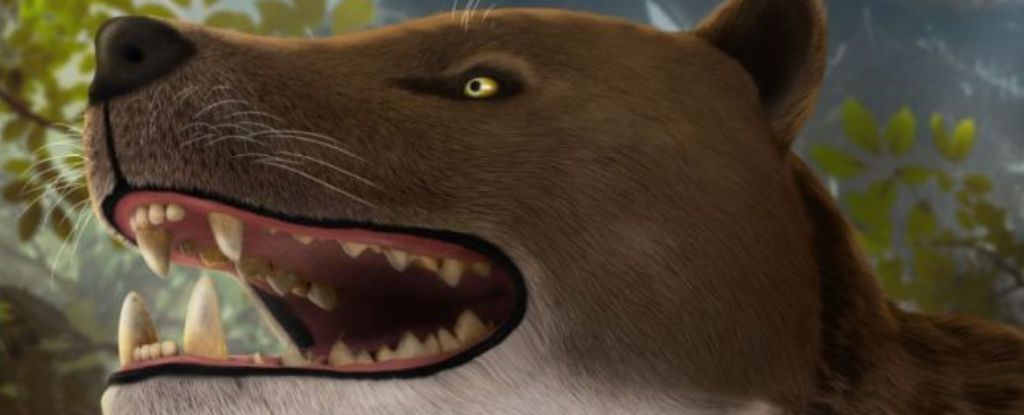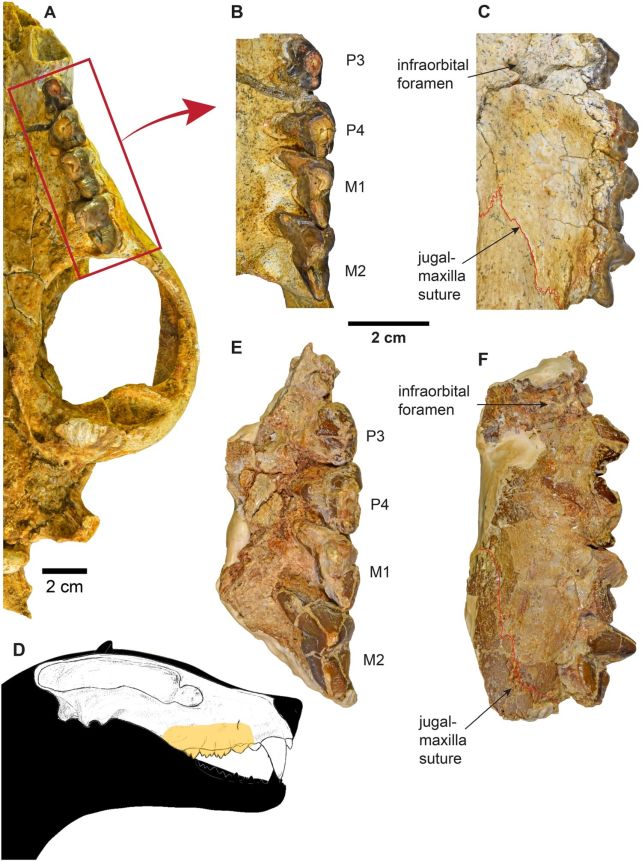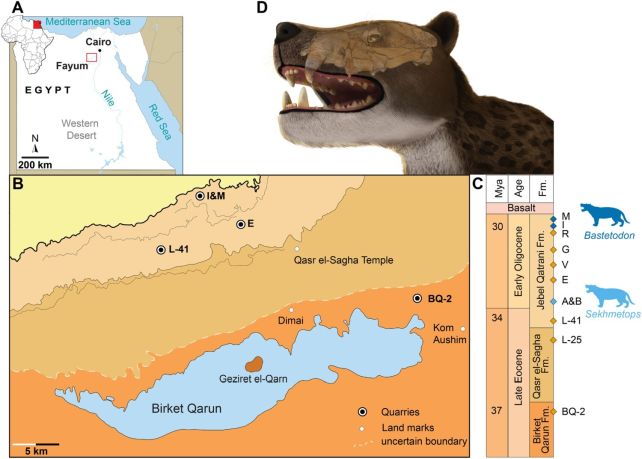
In the heart of Fayum, Egypt, where a desolate desert now stretches, there once thrived a verdant forest bursting with life.
But this paradise wasn’t without its dangers. Approximately 30 million years ago, the local fauna—including primates, hippopotamuses, elephants, and hyraxes—likely found themselves preyed upon by a formidable hunter: a leopard-sized apex predator boasting powerful jaws and razor-sharp teeth.
This revelation comes from a significant discovery made by paleontologists, who unearthed a nearly complete skull belonging to this newly identified hypercarnivore, a member of the extinct carnivore group known as Hyaenodonta.
Led by paleontologist Shorouq Al-Ashqar from Mansoura University and the American University in Egypt, the research team has named this ferocious creature Bastetodon syrtos, in honor of the Egyptian goddess Bastet, who is often depicted with a lioness’s head and considered a deity of protection.
“For several days, our team diligently excavated layers of rock that date back about 30 million years,” Al-Ashqar recounts regarding the fossil excavation that revealed the skull. “Just as we were wrapping up, one of our team members spotted an exciting sight—large teeth protruding from the earth. His enthusiastic shout brought us all together, leading to an astonishing find: the almost-complete skull of this ancient apex predator, a moment any vertebrate paleontologist dreams of.”

The Fayum Depression serves as a treasure trove of fossils, providing vital insights into a 15-million-year stretch of history during the Paleogene period—a pivotal era for mammalian evolution.
For over a century, paleontologists have explored this region, uncovering the remnants of a once-thriving ecosystem.
“The Fayum is one of Africa’s most significant fossil sites,” notes Matt Borths, a paleontologist at Duke University in the United States. “Without it, our understanding of the origins of African ecosystems and the evolution of essential mammals—like elephants, primates, and hyaenodonts—would be considerably limited.”
While all fossil remains hold importance for piecing together the anatomy of extinct species, the skull is particularly telling, offering a wealth of information regarding survival strategies. The skull of Bastetodon displays dentition characteristic of Hyaenodonta, confirming its classification and providing clues about its lifestyle.
This creature, as researchers reveal, was a hypercarnivore, with a diet comprising over 70 percent meat—similar to that of wild cats and crocodiles. It occupied a dominant predator role within its local ecosystem.
This discovery also allowed scientists to reassess fossils found 120 years ago, revealing they belonged to a group of lion-sized hyaenodonts that once roamed the Fayum region. Initially thought to be related to European hyaenodonts when analyzed in 1904, these remains were newly classified with the genus Sekhmetops, named after the Ancient Egyptian goddess of war, Sekhmet.

Al-Ashqar and her team have concluded that these fossils—now categorized under the genus Sekhmetops—originated in Africa, distinct from their European counterparts, and highlight a pattern of waves of migration. Bastetodon is also believed to have originated in Africa.
From Africa, these animals ventured across the Northern Hemisphere, migrating to Asia, Europe, India, and North America. However, their reign in Africa came to an end due to environmental shifts, paving the way for other predators to ascend.
“The discovery of Bastetodon marks a crucial milestone in our understanding of the diverse evolution of hyaenodonts and their geographical distribution,” Al-Ashqar states. “We are eager to continue our exploration, uncovering the complex interactions between these ancient predators and their changing environments through time and across continents.”
The findings are detailed in the Journal of Vertebrate Paleontology.









